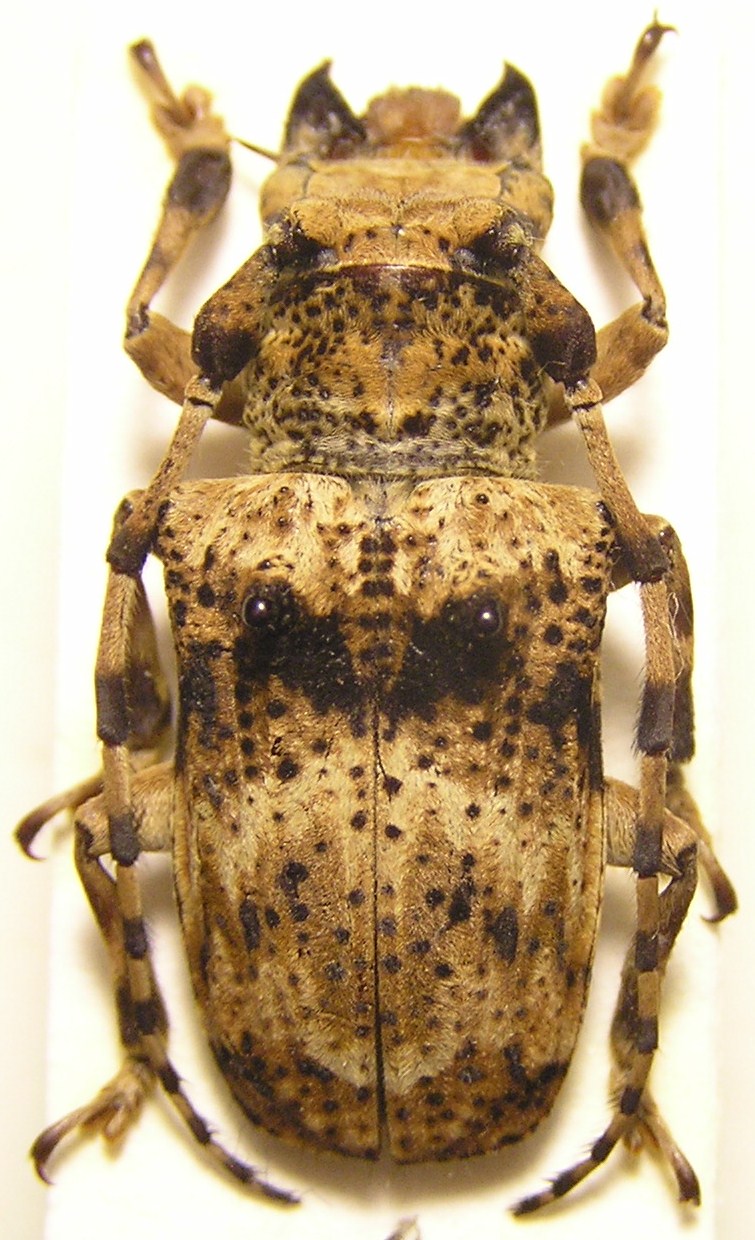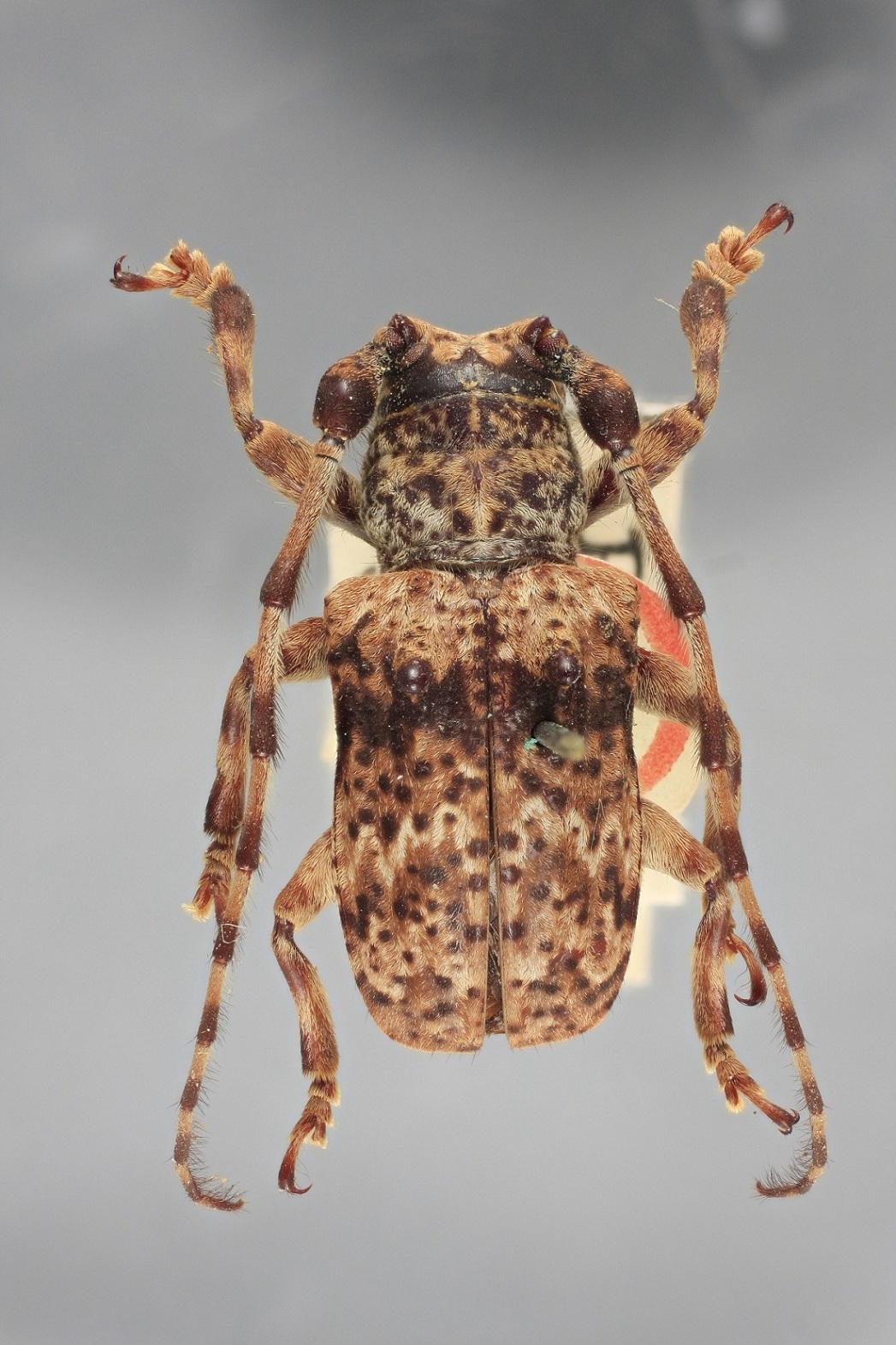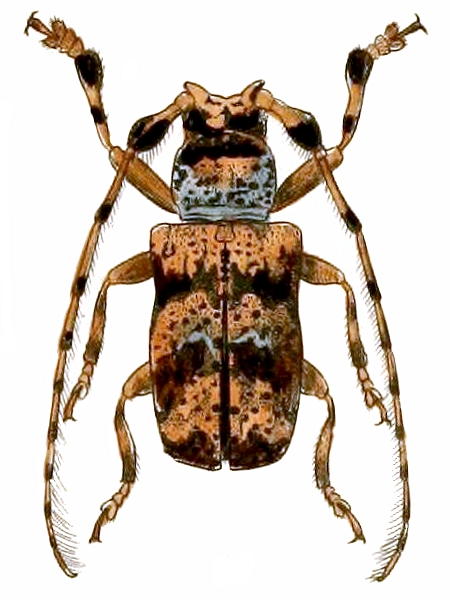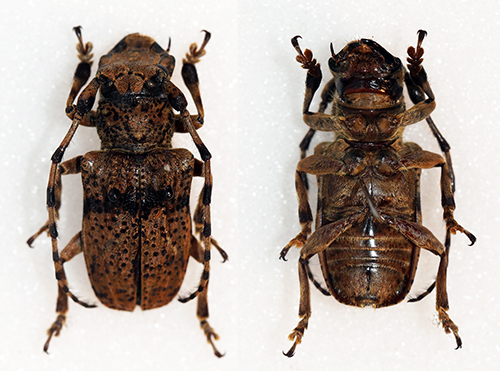| Author |
 Topic Topic  |
|
|
Robert
Member Rosenbergia
   
Canada
1249 Posts |
 Posted - 28/01/2013 : 06:30:27 Posted - 28/01/2013 : 06:30:27



|

Crossotini? |
Robert V. |
|
|
Francesco
Forum Admin
    
Luxembourg
9454 Posts |
 Posted - 28/01/2013 : 12:47:25 Posted - 28/01/2013 : 12:47:25




|
No, Pteroplini: female of Daxata (Taxada) sumatrensis von Breuning, 1961.
Cf. here a picture of two males. |
 |
|
|
Robert
Member Rosenbergia
   
Canada
1249 Posts |
 Posted - 28/01/2013 : 19:47:49 Posted - 28/01/2013 : 19:47:49



|
| Thank you Francesco! |
Robert V. |
 |
|
|
dryobius
Member Rosenbergia
   
USA
1887 Posts |
 Posted - 19/03/2013 : 18:34:12 Posted - 19/03/2013 : 18:34:12



|

474.3 KB
Your specimen looks very much like the type of Daxata camelus. |
 |
|
|
Francesco
Forum Admin
    
Luxembourg
9454 Posts |
 Posted - 20/03/2013 : 09:33:23 Posted - 20/03/2013 : 09:33:23




|
Interesting!
Pascoe's type does not seem to exactly correspond to the original drawing he himself provided.

According to Breuning, D. camelus (from Borneo) had 2 transversal bands; hence, he described the species with only one band as D. sumatrensis.
Probably... no: in all likelihood, Breuning knew this drawing but not the type.
Another synonymy, Dan?
(Many thank for your picture!  ) )
|
 |
|
|
dryobius
Member Rosenbergia
   
USA
1887 Posts |
 Posted - 20/03/2013 : 16:25:57 Posted - 20/03/2013 : 16:25:57



|
I believe D. sumatrensis must be a synonym, too.
And some of Pascoe's illustration are not very good. |
 |
|
|
Bennyboymothman
Member Rosenbergia
   
United Kingdom
1646 Posts |
 Posted - 15/11/2015 : 20:46:21 Posted - 15/11/2015 : 20:46:21





|
Hello everyone.
Following on this topic, Is this Daxata camelus? or sumatrensis, i'm assuming that it is sumatrensis with just one transversal band.
Data: 13-05-07 - Trus Madi mts - 1200m - Tambunan region - Sabah - NE Borneo

217.12 KB |
Edited by - Bennyboymothman on 16/11/2015 08:18:34 |
 |
|
|
Xavier
Scientific Collaborator
    
France
12213 Posts |
 Posted - 15/11/2015 : 22:10:25 Posted - 15/11/2015 : 22:10:25



|
| Try again for the picture, without any "space" in the title. |
 |
|
|
dryobius
Member Rosenbergia
   
USA
1887 Posts |
 Posted - 15/11/2015 : 23:21:28 Posted - 15/11/2015 : 23:21:28



|
In my opinion it must be D. camelus.
As stated before, the type in BMNH does not match the hand painted drawing in Pascoe's Longicornia. Furthermore, Breuning frequently made statements that are difficult to understand, so his holotypes, more than anyone else, have to be looked at.
These cryptically colored Pteropliini and Mesosini almost always show some variation in the patterns on the elytra, especially in the darkness or lightness of the patterns.
D. camelus is a very common species, so I have seen some variation in the width of the elytral band, etc.
Ben, you should visit the collection at the BMNH if you have not already done so. I'm sure they have a nice series of Daxata.
|
 |
|
|
Bennyboymothman
Member Rosenbergia
   
United Kingdom
1646 Posts |
 Posted - 16/11/2015 : 08:20:12 Posted - 16/11/2015 : 08:20:12





|
| Yes I must indeed go back to the museum one day and study the holotypes there. Thanks, the picture is now up for you to see. |
 |
|
| |
 Topic Topic  |
|


